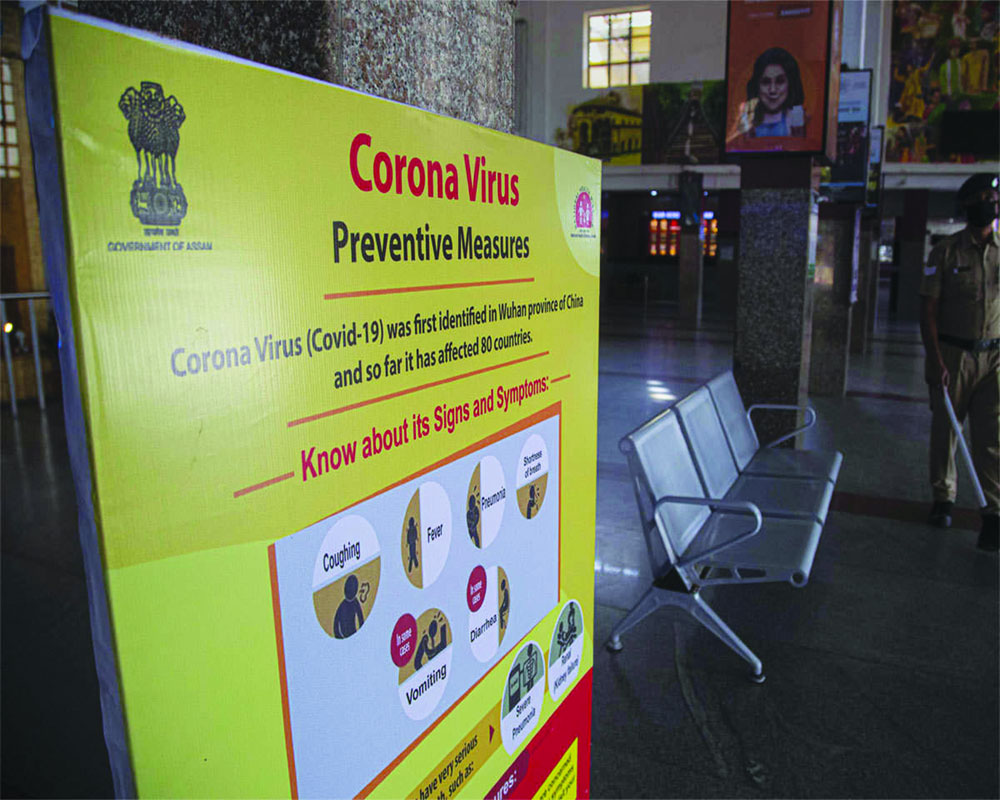<!-- wp:image {"id":23591,"sizeSlug":"large"} -->
<!-- /wp:image --><!-- wp:paragraph -->
Aggressive door-to-door screening and testing have put the epicentre town of Rajasthan on the road to recovery
<!-- /wp:paragraph --><!-- wp:paragraph -->
Much has been written about how China stifled the Wuhan contagion by aggressive containment and sealing the city so that nobody could leave it, thereby confining and choking the virus in the hotspot. Of course, one wonders why China could not have shown the same military aggression when cases started multiplying, under reported them instead, turned down world virologists and WHO and erred on saving the world a disaster. A bigger success story is of Taiwan next to China, which has had positive cases but deaths in single numbers. That’s because it adopted an aggressive protocol since the last week of January, with senior Government officials travelling to China, inspectors keeping a watch on board flights, the Government suspending flights from China and then tracing, isolating, testing, treating and re-testing each citizen with a travel history, monitoring his/her every move. This it topped up with an emergency protocol should there be a flood at anytime. This is perhaps the model that Bhilwara has adapted and applied rigorously to contain the spiral of the disease. Even as the number of Covid-19 cases in India are leaping through the charts, there have been no new cases at Bhilwara, although it was a hotspot with cases spreading from a hospital. The last Coronavirus case in Bhilwara was reported on March 30 when the total positive cases in the district were 26 with two deaths. It is difficult to believe that what was once considered the epicentre of Rajasthan has turned around an intractable situation. The Bhilwara administration acted fast, enforcing a curfew and sealing district borders on March 20, even before the national lockdown. After quarantining the entire hospital staff and patients, it went for aggressive testing, conducting a door-to-door screening of its 28 lakh population to detect any signs of community transmission. It allowed bare essential shops and medical stores to stay open for limited hours while the administration home-delivered ration, fruit and vegetable supplies through local booths. The administration is now contemplating home-delivering milk and medicines so that nobody steps out at all and even cancelling curfew passes. The police are enforcing the curfew through regular patrols. The confinement has minimised the possibility of spread as nobody has been allowed to even walk the streets, leave aside crowding markets. Although it has tested 300 to 400 samples every day, the authorities are planning to ramp that up to 4,000 over the next few days. Not only that, since the samples were being sent to Jaipur, which is about 250 km away and identification took time, the town will have its own testing set-up this weekend. In effect, the entire district is under watch, cut off from the world. And till it is an all-clear, it will continue the rigour.
<!-- /wp:paragraph --><!-- wp:paragraph -->
Perhaps, this is what the Health Ministry is considering as trends clearly establish that 80 per cent of the infection has occurred in 62 districts. And while the lockdown may be eased in low-density parts of the country, the hotspots could be subjected to an aggressive testing and containment protocol along what has come to be known as the Bhilwara model. In fact, India’s fight against COVID-19 can only be tackled if it is decentralised down to the unit level and policy-makers let specific geographies and local dynamics decide how things could work best at a cluster. The non-pharmaceutical intervention is the best way to contain the crisis given India’s non-existent health infrastructure and Bhilwara has shown how to bring the virus out of hiding. The faster we do it, the easier it will be for us to get back on the road to recovery and get the economy going.
<!-- /wp:paragraph --><!-- wp:paragraph -->
(Courtesy: The Pioneer)
<!-- /wp:paragraph -->








 OpinionExpress.In
OpinionExpress.In















Comments (0)